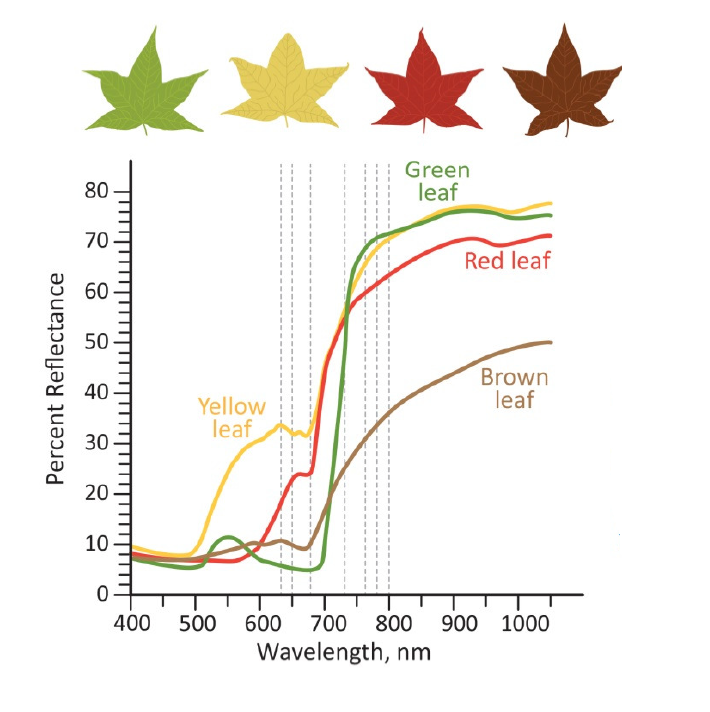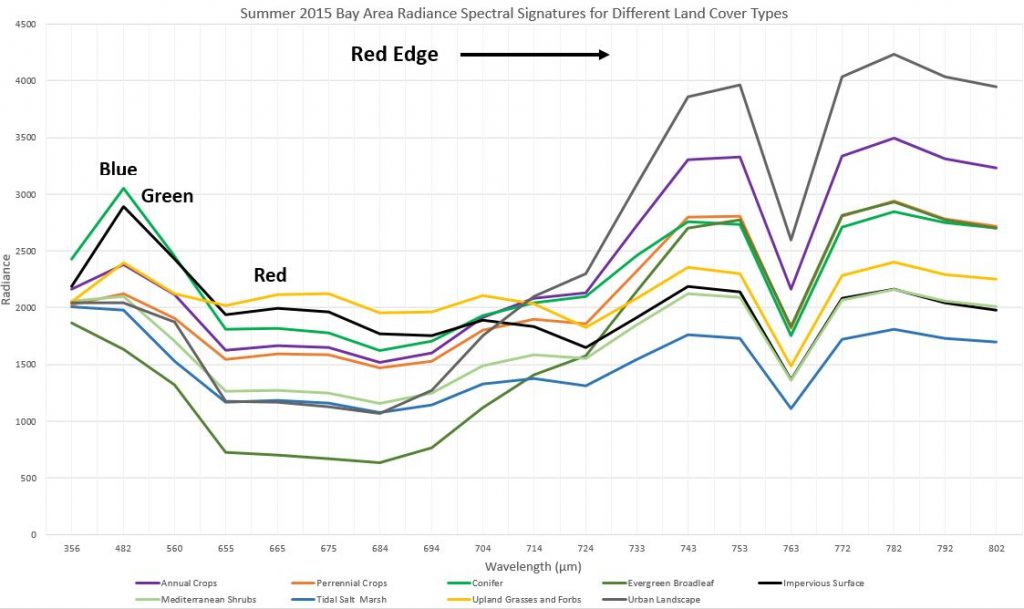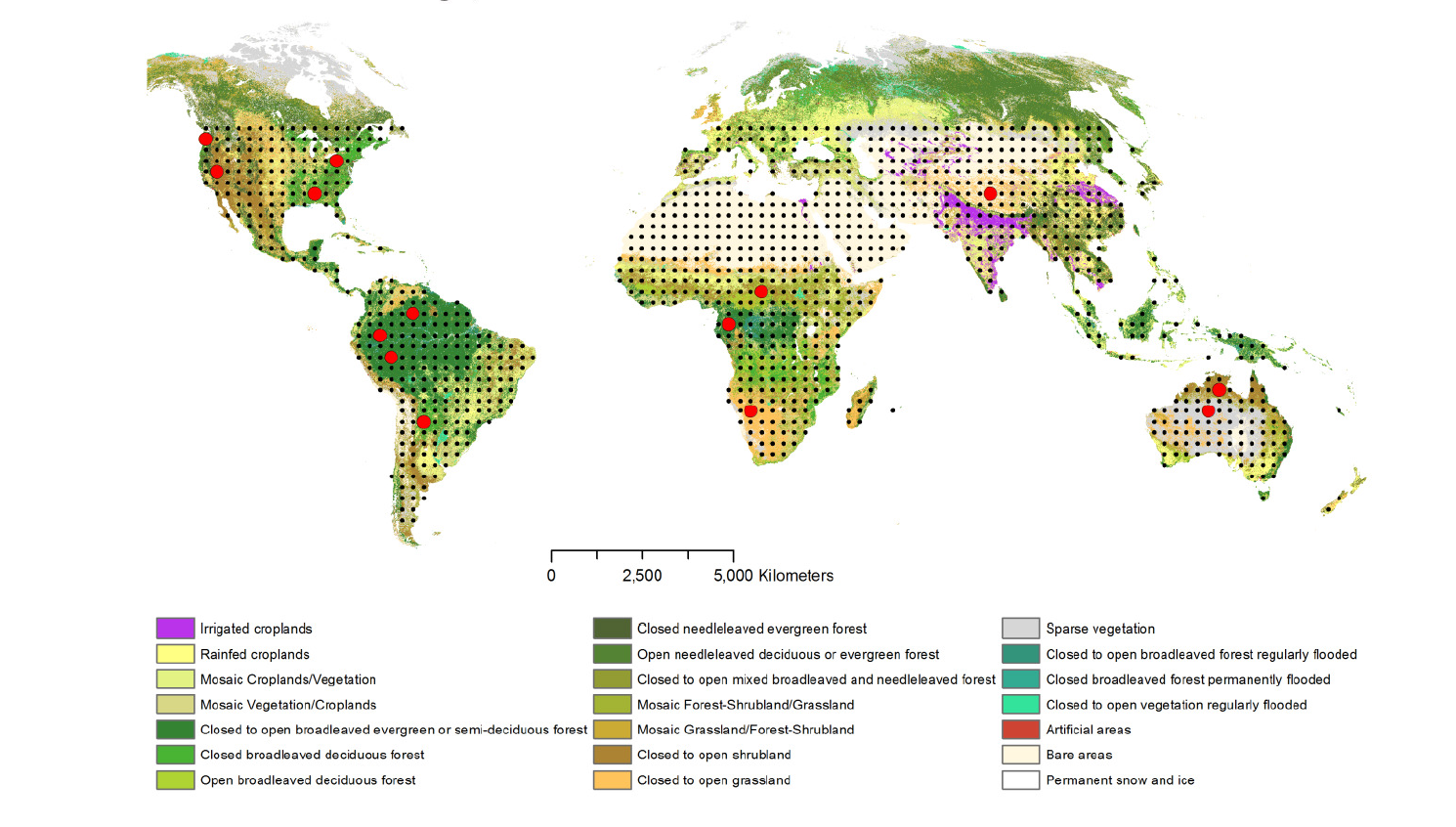As a prototype project, EdgeCube could turn out to be a better climate change monitor. EdgeCube could be replicated to provide a constellation of nanosats that monitor the earth’s surface for decades, providing quantitative measures of the effects of climate change on ecosystem phenology, productivity and health, such as shifts in growing season initiation and duration.
Our team propose a global measurement of the red edge that monitors a sharp change in leaf reflectance in the range 680 to 750 nm from changes in vegetation chlorophyll absorption and mesophyll scattering due to seasonal leaf phenology or stress.


The picture is an example of a red edge spectrum for different colors Sweetgum leaves (derived from Jensen 2000). Gray lines indicate seven nominal narrow band spectral filters under consideration for the EdgeCube science instrument.
The map below is the Terrestrial sampling locations for the EdgeCube assuming 300 km spacing and global coverage between +-50 degrees latitude. Analysis will focus on those locations in areas of relatively homogenous natural land cover (red dots). Credit: M. Clark and R. Caldwell.
For the mission, the accurate measurement of change depends on the calibration and stability of the sensors. EdgeCube will help to determine how to deal with these types of systematic errors.
Vegetation indices based on the contrast between red and NIR reflectance, such as Normalized Difference Vegetation Index (NDVI) tend to saturate in sensitivity at higher levels of vegetation structure (Wang et al., 2005). Brantley et al. (2011) have shown that red edge measurements of high LAI canopies are accurate proxies to monitor changes in these types of ecosystems without as much saturation

